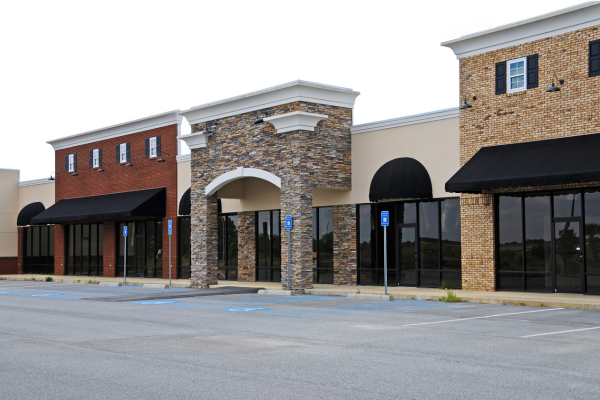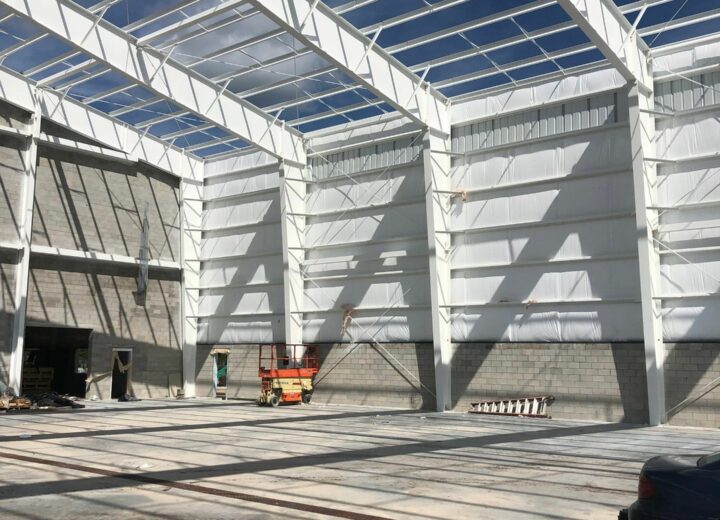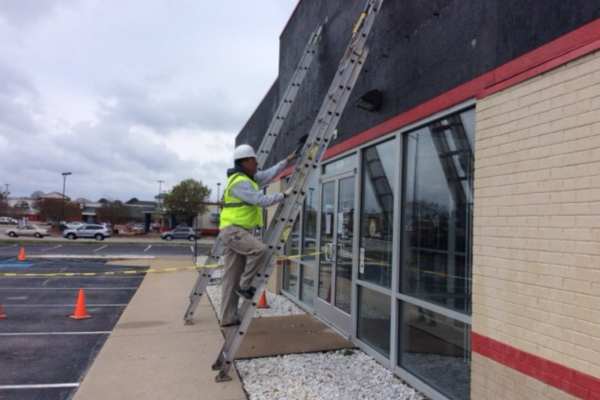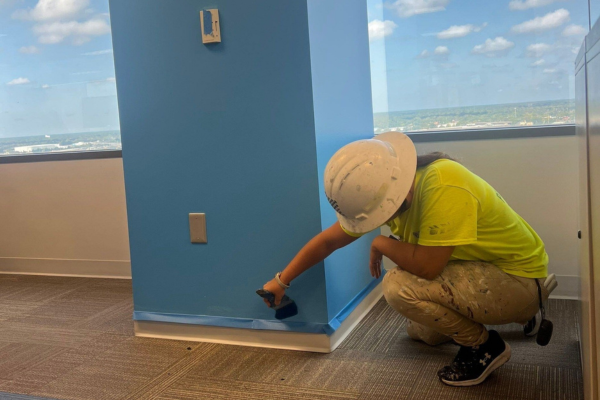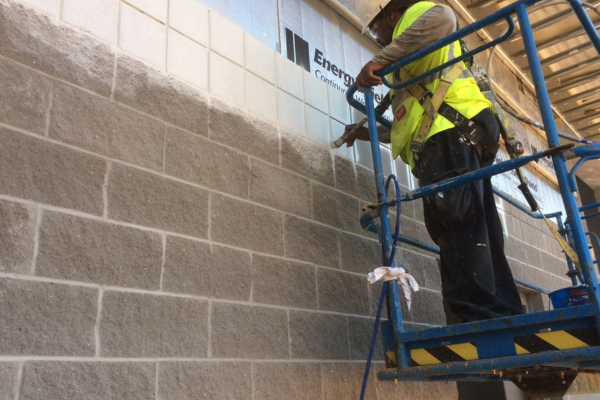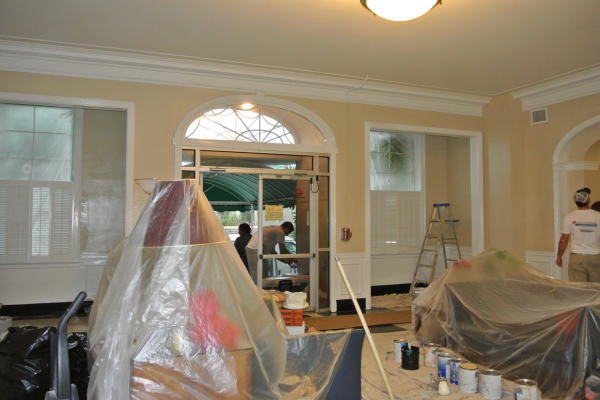
The design and aesthetics of commercial spaces play a crucial role in creating an environment that reflects a company’s brand, enhances employee productivity, and attracts customers. As a business owner, staying updated with the latest trends in commercial interior design and painting can help you make informed decisions that will keep your space modern, functional, and appealing. Here’s a look at some of the most notable trends shaping commercial interiors in 2024.
1. Biophilic Design: Bringing Nature Indoors
Biophilic design, which emphasizes the connection between humans and nature, continues to be a dominant trend in commercial spaces. This approach incorporates natural elements such as plants, natural light, water features, and organic materials. The goal is to create a calming and refreshing environment that enhances employee well-being and productivity.
Key Elements:
- Green Walls and Indoor Plants: Integrating living walls or an abundance of indoor plants not only improves air quality but also adds a touch of nature to the workplace.
- Natural Materials: Use of wood, stone, and bamboo in furniture and decor.
- Ample Natural Light: Maximizing natural light through large windows or skylights reduces the need for artificial lighting and creates a more vibrant workspace.
2. Sustainable and Eco-Friendly Materials
With a growing emphasis on sustainability, commercial interior design is increasingly focused on using eco-friendly materials and practices. Businesses are choosing sustainable options not only to reduce their environmental footprint but also to appeal to eco-conscious clients and employees.
Key Elements:
- Recycled and Reclaimed Materials: Using recycled wood, metal, and glass in furniture and decor.
- Low VOC Paints: Choosing paints with low volatile organic compounds to improve indoor air quality.
- Energy-Efficient Lighting: Implementing LED lighting and smart systems to reduce energy consumption.
3. Flexible and Adaptable Spaces
The concept of flexible and adaptable workspaces has gained significant traction, especially in the post-pandemic era. Companies are designing spaces that can easily transform to accommodate different functions and activities, promoting a dynamic and collaborative environment.
Key Elements:
- Modular Furniture: Furniture that can be easily moved and reconfigured to suit various needs.
- Multipurpose Areas: Spaces that serve multiple functions, such as a conference room that can also be used as a lounge or break area.
- Open Floor Plans: Encouraging collaboration and communication while also providing private areas for focused work.
4. Technology Integration for Your Commercial Space
Incorporating advanced technology into commercial interiors is no longer optional but a necessity. From smart lighting and climate control to advanced audio-visual systems, technology integration enhances the functionality and efficiency of the workspace.
Key Elements:
- Smart Office Solutions: Automated systems for lighting, heating, and cooling that can be controlled via smartphones or voice commands.
- Interactive Displays: Touchscreen monitors and interactive whiteboards for meetings and presentations.
- High-Speed Connectivity: Ensuring robust Wi-Fi and wired internet connections to support modern business needs.
5. Color Trends and Innovative Painting Techniques
Color plays a crucial role in setting the tone and mood of a commercial space. The latest trends in commercial painting focus on creating vibrant and engaging environments through the use of bold colors, innovative techniques, and custom murals.
Key Elements:
- Bold and Vibrant Colors: Bright, bold colors like deep blues, rich greens, and vibrant oranges are being used to create focal points and energize spaces.
- Gradient and Ombre Effects: Smooth transitions between colors add depth and interest to walls and surfaces.
- Custom Murals and Wall Art: Unique murals and wall art that reflect the company’s brand and values create a personalized and inspiring atmosphere.
6. Ergonomic and Employee-Centric Design
The well-being of employees is a top priority in modern commercial interior design. Creating ergonomic workspaces that promote comfort and reduce the risk of strain and injury is essential for maintaining a productive and healthy workforce.
Key Elements:
- Ergonomic Furniture: Adjustable chairs, sit-stand desks, and ergonomic accessories like keyboard trays and monitor stands.
- Comfortable Break Areas: Spaces equipped with comfortable seating, recreational activities, and relaxation zones.
- Acoustic Solutions: Soundproofing and acoustic panels to reduce noise pollution and create a more peaceful environment.
7. Incorporation of Local Culture and Art
Reflecting local culture and art in commercial interiors adds a unique and authentic touch to the workspace. This trend not only supports local artists and communities but also creates a sense of place and belonging.
Key Elements:
- Local Artwork: Featuring pieces by local artists in the office decor.
- Cultural Elements: Incorporating design elements that reflect the local culture, history, or geography.
- Community Spaces: Creating areas where employees can engage with the local community, such as event spaces or galleries.
8. Health and Wellness-Oriented Design
Health and wellness have become central themes in commercial interior design, driven by the growing awareness of the impact of the physical environment on mental and physical health. Designing spaces that support wellness can lead to improved employee satisfaction and productivity.
Key Elements:
- Wellness Rooms: Dedicated spaces for relaxation, meditation, or fitness activities.
- Healthy Building Certifications: Adopting standards like WELL Building Standard to ensure a healthy indoor environment.
- Air and Water Quality: Installing high-quality air filtration systems and providing access to clean drinking water.
9. Use of Texture and Layers
Creating visually and tactically engaging spaces through the use of texture and layers adds depth and richness to commercial interiors. Combining different textures and materials can make a space feel more inviting and dynamic.
Key Elements:
- Textured Wall Finishes: Use of materials like brick, wood paneling, or textured paint.
- Layered Lighting: Combining ambient, task, and accent lighting to create a balanced and versatile lighting scheme.
- Variety of Fabrics: Incorporating a mix of fabrics in upholstery, drapery, and accessories.
10. Branding and Personalization
Commercial spaces are increasingly being designed to reflect the company’s brand and identity. Personalization through branded elements and custom designs helps create a unique and cohesive environment that reinforces the company’s values and culture.
Key Elements:
- Branded Colors and Logos: Incorporating the company’s brand colors and logos into the design.
- Custom Furniture and Decor: Creating custom pieces that reflect the company’s style and ethos.
- Employee Input: Involving employees in the design process to ensure the space meets their needs and preferences.
Turn Your Commercial Interior Into a Desired Space with Design
Staying abreast of the latest trends in commercial interior design and painting is essential for business owners looking to create functional, attractive, and modern workspaces. By incorporating elements such as biophilic design, sustainable materials, flexible spaces, advanced technology, and vibrant colors, you can create an environment that enhances productivity, supports employee well-being, and reflects your brand’s identity. Whether you’re redesigning an existing space or planning a new one, these trends provide a wealth of inspiration and ideas to help you make the most of your commercial interiors.

